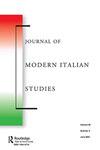Milan riots of 1853: history and remembrance
IF 0.7
3区 历史学
Q1 HISTORY
引用次数: 0
Abstract
ABSTRACT The article recounts the revolt that took place in Milan on 6 February 1853 and investigates its presence in the official memory of the city. The main figures in the rebellion were from Milan’s working class: while the movement was fomented by Mazzini, it was carried out independently by badly organized groups of workers; unlike the ‘Cinque Giornate’ of 1848, the upper classes were not involved. Barricades were erected and Austrian soldiers were killed, but order was promptly restored by the Austrians. The occupying forces arrested hundreds of people, executed sixteen working-class men and ordered the seizure of the goods of exiles who had left Lombardy after 1848. The article looks at how the events of 1853 were treated by historiography and local commemoration from unification to the present day. It discusses the meaning of the inclusion of that failed, impracticable uprising – a divisive one, involving as it did only figures from the lower classes – in the official justification of the city’s heroism, sanctioned in 1948 when Milan was awarded the gold medal for military valour.1853年米兰骚乱:历史与纪念
摘要本文讲述了1853年2月6日发生在米兰的起义,并调查了起义在米兰官方记忆中的存在。叛乱的主要人物来自米兰的工人阶级:虽然这场运动是由马齐尼煽动的,但它是由组织恶劣的工人团体独立进行的;与1848年的“耶稣五世”不同,上层阶级没有参与其中。路障被竖起,奥地利士兵被杀,但奥地利人很快恢复了秩序。占领军逮捕了数百人,处决了16名工人阶级男子,并下令扣押1848年后离开伦巴第的流亡者的货物。本文着眼于从统一到今天,史学和地方纪念如何对待1853年的事件。它讨论了将那场失败的、不切实际的起义——一场分裂性的起义,因为它只涉及下层阶级的人物——纳入1948年米兰被授予军事英勇金牌时批准的城市英雄主义的官方理由中的意义。
本文章由计算机程序翻译,如有差异,请以英文原文为准。
求助全文
约1分钟内获得全文
求助全文
来源期刊

Journal of Modern Italian Studies
Multiple-
CiteScore
1.00
自引率
25.00%
发文量
66
期刊介绍:
The Journal of Modern Italian Studies (JMIS) is the leading English language forum for debate and discussion on modern Italy. This peer-reviewed journal publishes five issues a year, each containing scholarly articles, book reviews and review essays relating to the political, economic, cultural, and social history of modern Italy from 1700 to the present. Many issues are thematically organized and the JMIS is especially committed to promoting the study of modern and contemporary Italy in international and comparative contexts. As well as specialists and researchers, the JMIS addresses teachers, educators and all those with an interest in contemporary Italy and its history.
 求助内容:
求助内容: 应助结果提醒方式:
应助结果提醒方式:


